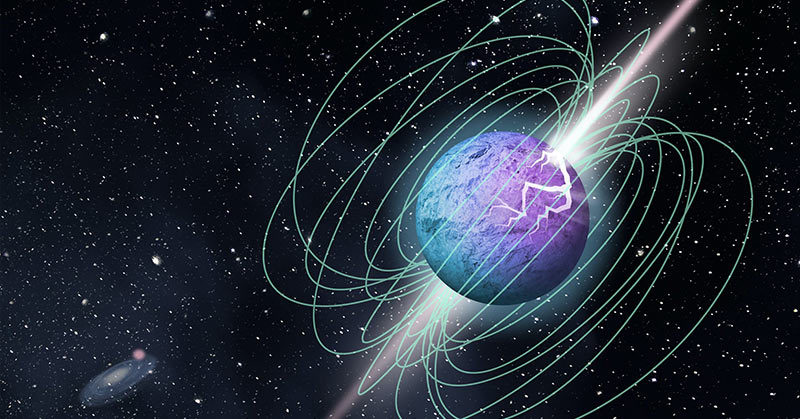Between 2018 and 2019, we observed the first 28 cycles of a fast radio burst coming from ultra-deep space. Astronomers estimated that the object it came from was approximately five hundred million lightyears away. Despite this, they declared that this mysterious radio signal was the closest our planet has ever seen. That is, until now. Recently, astronomers have detected another one of these mysterious radio signals, only this time it came from within our own galaxy.
A Mysterious Radio Signal… Solved?
Fast radio bursts are exactly as they sound: bright bursts of radio waves that last barely a millisecond. Scientists first discovered FRBs in 2007, but it’s been difficult to detect them and determine their position in the sky because they disappear so quickly [1]. Astronomers have come up with a multitude of theories to explain these mysterious radio signals, including dying stars and alien technology. Confirming any of these theories, however, has been a challenge [2].
Observing Our Galaxy

Finally, however, astronomers have been able to observe an FRB in our own galaxy (the Milky Way). This has given them a chance to get a much closer look at this galactic phenomenon. “There’s this great mystery as to what would produce these great outbursts of energy, which until now we’ve seen coming from halfway across the universe,” said Kiyoshi Masui, assistant professor of physics at MIT [3]. Not only is this the closest FRB scientists have ever detected, but they have, for the first time, been able to explain their origin.
Read: Poland’s Mysterious “Crooked Forest” Populated with 400 Bent Trees
Magnetars and FRB’s

Magnetars are neutron stars with an ultra-powerful magnetic field. They can erupt without warning, with some taking hours and others months before they disappear again. Astronomers are only aware of ten magnetars in our own Milky Way Galaxy. Given their penchant for disappearing, however, scientists believe that there could be hundreds more out there [4].
Today, we now know that these mysterious radio signals come from magnetars. Or at least, this one did. On April 27, researchers using two space telescopes picked up multiple X-ray and gamma-ray emissions coming from a magnetar at the opposite end of the Milky Way. The following day they used two North American telescopes to look at the same spot and picked up FRB 200428.
There are three things that make this FRB important:

- It’s the first FRB in the Milky Way
- It’s the first time scientists have associated an FRB with a Magnetar
- It’s the first blast to send out emissions other than radio waves.
This makes it a valuable clue to determine the origin of other FRBs from outside our galaxy [3].
The Mystery Continues

Scientists have by no means answered all their questions with regard to FRBs. “Given the large gaps in energetics and activity between the brightest and most active FRB sources and what is observed for magnetars, perhaps younger, more energetic, and active magnetars are needed to explain all FRB observations,” said Paul Scholz, from the Dunlap Institute of Astronomy and Astrophysics at the University of Toronto [3].
The Bottom Line

For this reason, scientists still cannot definitively pinpoint the origin of every FRB. Even once they prove for certain that a magnetar is the source of the mysterious radio signal, still many more questions remain. What mechanism allows a magnetar to power an FRB? How can it send out such bright bursts of energy and X-rays at the same time? This latest discovery in the FRB saga is only the beginning.
Keep Reading: What is the Mysterious ‘Global Hum’?


